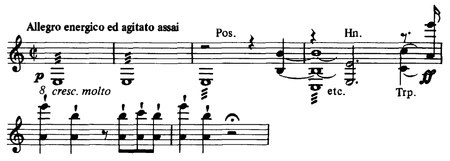Composition
In 1850, Franz Liszt composed an overture and eight choruses with orchestra accompaniment for Johann Gottfried Herder's Der entfesselte Prometheus (Prometheus Unbound), a mythological work of thirteen scenes meant as a sequel to Aeschylus's Prometheus Bound . This was to be performed for the Herder Festival scheduled for August of that year in Weimar. [2] Liszt gave indications for the orchestration, and from these notes Liszt's helper Joachim Raff produced a score which was used in the first performance. This concert commemorated the unveiling of a monument to Herder on 24 August 1850. In 1855 Liszt revised both the overture and the choruses, added new instruments, mainly woodwinds, which resulted in the expansion of the overture to a symphonic poem and the choruses to a concert stage work. The symphonic poem was first performed on 18 October 1855. [2] [3]
Description
The work that was composed to illustrate the imprisonment, pain, hope, and the final triumph of Prometheus turned out to be incomprehensible to the contemporary public because of the many dissonances in the music. The choral parts ended too soon and were unusable, but the overture acquired its own life as a symphonic poem thanks to many performances of it by conductor Hans von Bülow.
For the performance of the revised choruses, Weimar critic Richard Pohl condensed Herder's work into prologues to be read before each chorus. Unlike Herder's allegorical text, Pohl's prologues develop Prometheus' character, emphasizing both his sufferings and his turbulent relationship with Zeus. They also create an intensity not present in Herder's drama, which carries over into the symphonic poem, from the furious opening (marked Allegro energico ed adagio assai) to the principal musical material (marked Allegro molto appassionato). [4]


